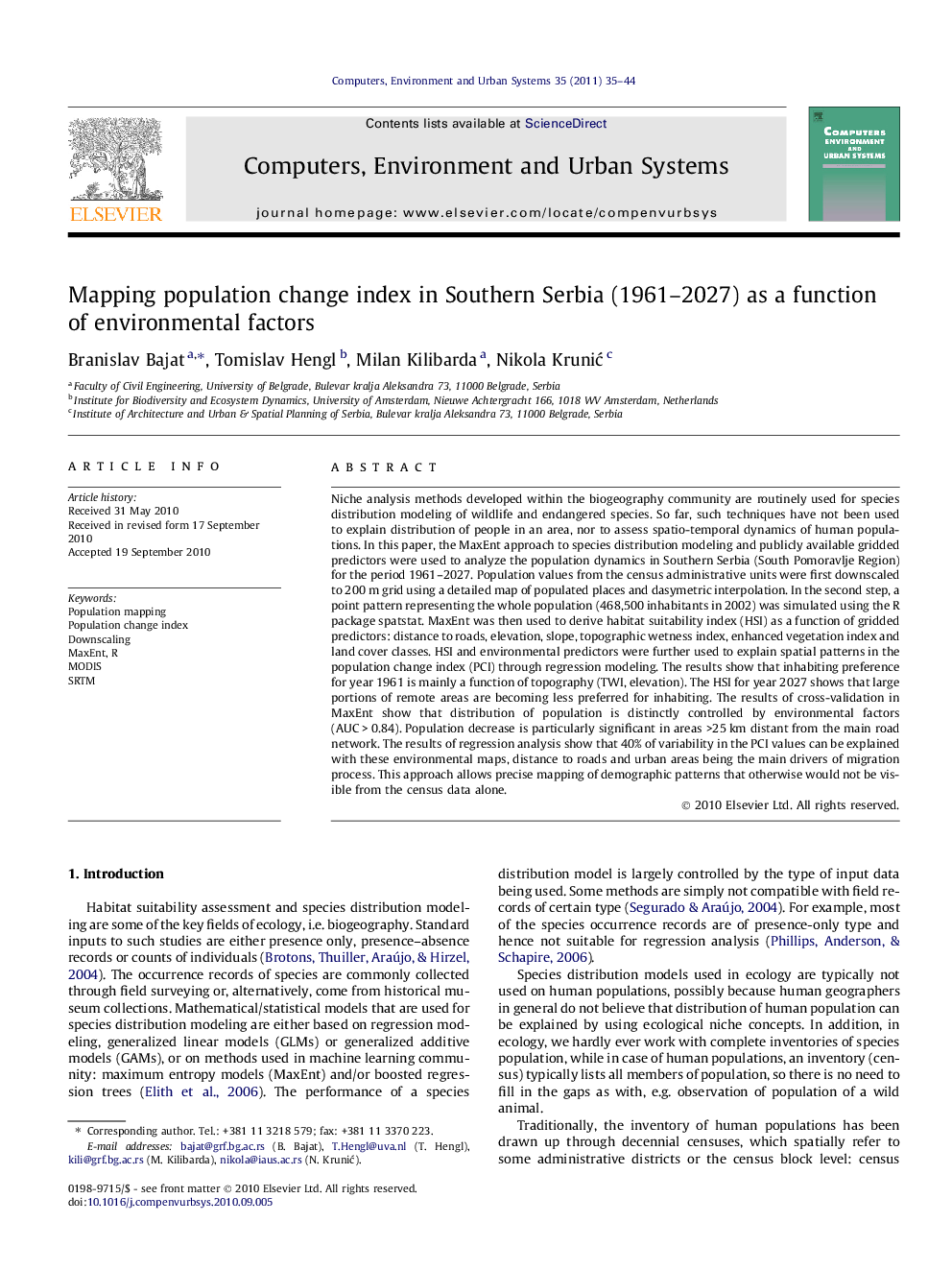| کد مقاله | کد نشریه | سال انتشار | مقاله انگلیسی | نسخه تمام متن |
|---|---|---|---|---|
| 506691 | 864942 | 2011 | 10 صفحه PDF | دانلود رایگان |

Niche analysis methods developed within the biogeography community are routinely used for species distribution modeling of wildlife and endangered species. So far, such techniques have not been used to explain distribution of people in an area, nor to assess spatio-temporal dynamics of human populations. In this paper, the MaxEnt approach to species distribution modeling and publicly available gridded predictors were used to analyze the population dynamics in Southern Serbia (South Pomoravlje Region) for the period 1961–2027. Population values from the census administrative units were first downscaled to 200 m grid using a detailed map of populated places and dasymetric interpolation. In the second step, a point pattern representing the whole population (468,500 inhabitants in 2002) was simulated using the R package spatstat. MaxEnt was then used to derive habitat suitability index (HSI) as a function of gridded predictors: distance to roads, elevation, slope, topographic wetness index, enhanced vegetation index and land cover classes. HSI and environmental predictors were further used to explain spatial patterns in the population change index (PCI) through regression modeling. The results show that inhabiting preference for year 1961 is mainly a function of topography (TWI, elevation). The HSI for year 2027 shows that large portions of remote areas are becoming less preferred for inhabiting. The results of cross-validation in MaxEnt show that distribution of population is distinctly controlled by environmental factors (AUC > 0.84). Population decrease is particularly significant in areas >25 km distant from the main road network. The results of regression analysis show that 40% of variability in the PCI values can be explained with these environmental maps, distance to roads and urban areas being the main drivers of migration process. This approach allows precise mapping of demographic patterns that otherwise would not be visible from the census data alone.
Research highlights
► Inhabiting preference for year 1961 is mainly a function of topography.
► Distribution of population is distinctly controlled by environmental factors with an AUC > 0.84.
► The results of regression analysis show that the population change index in the period 1961–2002 clearly follows the pattern of the road network.
► 40% of variability in the population change index values can be explained with environmental maps.
Journal: Computers, Environment and Urban Systems - Volume 35, Issue 1, January 2011, Pages 35–44